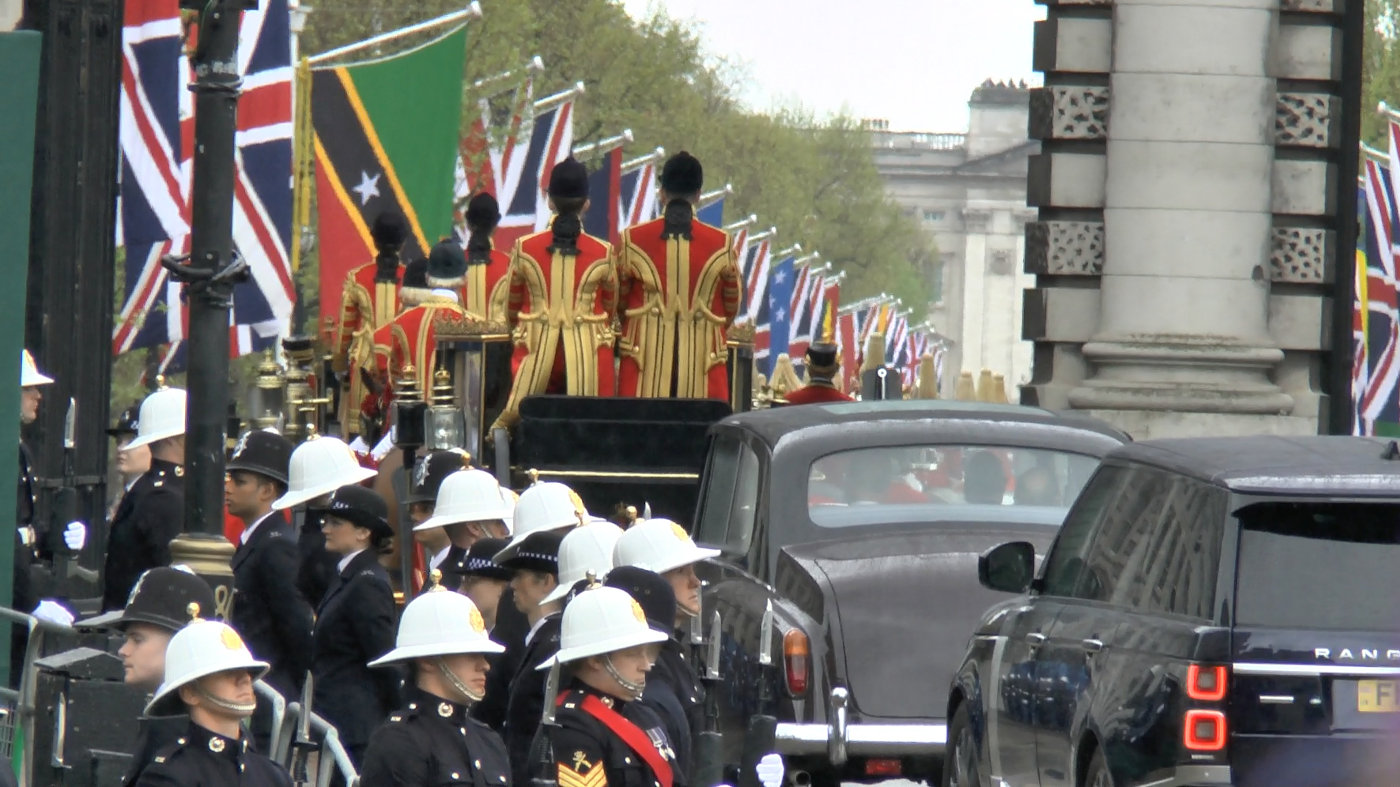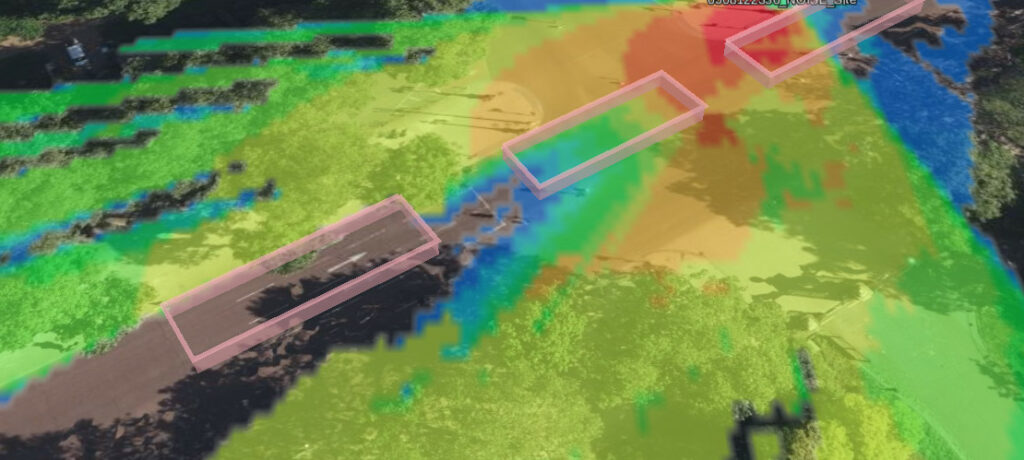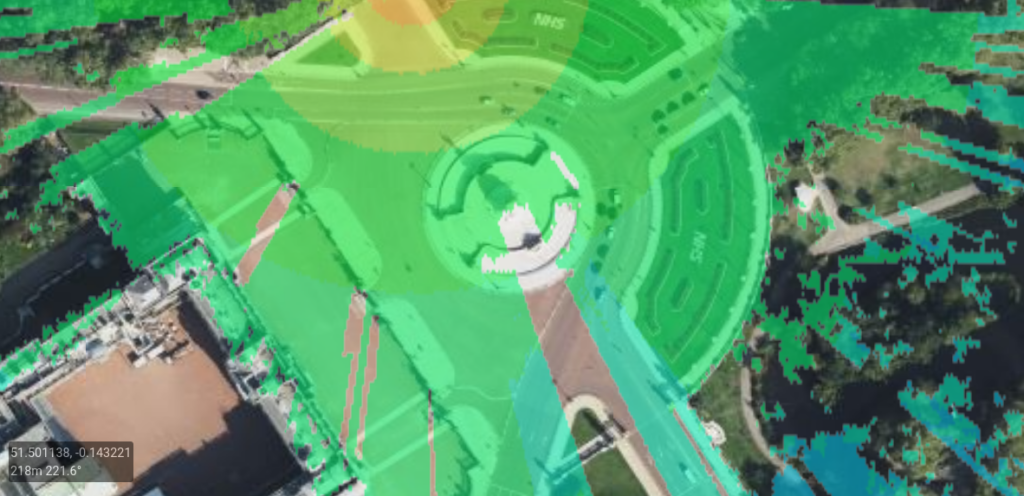
On Saturday 6th May the worlds media descended on London for the Coronation of King Charles, an event last planned before many people had television.
As the national broadcaster, the BBC managed the coverage and worked with Neutral Wireless to deploy an innovative private 5G network, with dedicated spectrum, along the procession route for exclusive use by the media and special cameras with 5G modems.
Using the CloudRF API with UK LiDAR data the team created accurate urban line of sight models for their N77 base stations along the tree lined route. Their model used RSRP units and a custom colour schema to map the 4GHz downlink coverage and key handover regions to ensure smooth subscriber transitions for the dynamic event.
Antenna patterns
The area to be covered is a linear tree lined boulevard known as “The Mall” which leads to one of the most iconic buildings in the country, Buckingham palace. For this task, high performance Alpha Wireless directional panels were employed above the crowds at only 4m, much lower than a conventional city cellular network where a mast will be on rooftops. The combination of low height and a 4GHz frequency limits the effective range so the direction of the antennas needed to be carefully optimised to provide maximum coverage for broadcasters, strategically positioned along the route for line of sight.


How do you model a parade of horses?
Given the low height of the masts and the significant number of tall horses on parade this presents a challenge to critical line of sight which a LiDAR vendor cannot help with. The same problem applies to temporary structures such as the grandstand erected outside the Palace.
For a challenge such as this we can use custom clutter to simulate a parade of horses at a uniform distribution with a nominal density value. A “brick” clutter type can be customised to 2m height and 0.4dB/m attenuation to simulate loss through the parade to show the low and high risk locations for maintaining a link through the parade.
Our current 2D engine regards all obstacles as extending to the ground so a clutter model for a horse will be conservative since in reality a horse has a substantial gap between its legs sufficient for some RF to travel between it and reflect, and diffuse, off the rough ground to reach a camera beyond it. We’re already working on 3D 😉
In the screenshot below, the formation nearest the mast present no challenge, the formation in the middle show attenuation throughout them making a link difficult potentially depending upon siting of the receiver and the distant formation is blocking the, already attenuated, signal.
Trees
The parade was held in May when the trees along the Mall are coming into leaf presenting a moderate obstacle to the 4GHz frequencies. The temporary masts were therefore erected forward of the trees for optimal coverage but still technically under the canopy which makes planning challenging with a 2D engine since these trees can exist as spikes in the LiDAR profile. To avoid accidentally siting a mast atop a tree/spike in the model the path profile tool can be used to inspect the path profile, to identify where there are tall trees in the underlying surface model. Using the UK Environment Agency LiDAR from 2019, the nearest trees on the Mall are lightly represented in LiDAR with a 6m to 8m average canopy compared to their significant neighbours one row back and beyond in St James Park.
The result
The high resolution coverage map was integrated with official event mapping, printed, and displayed in the event broadcasting operations room as a reference. You can also see it on the BBC.
Despite the challenges expected from such congested spectrum, dynamic obstructions and the unexpected surprise of unscheduled electronic counter measures they were able to deliver accurate coverage, on time and within budget to broadcast a historic event in high definition, in real time.
CloudRF referenced in award winning technical paper
The BBC research and development team published an award winning paper at the 2023 International Broadcasting Convention about the event titled 5G Standalone Non-Public Networks: Modernising wireless production.
In this paper, the 4GHz coverage accuracy was validated using ground truth data. This quote about CloudRF’s accuracy stands out:
The agreement between the predictions and on-the-ground measurements is excellent
BBC Research and Development
You can download the paper at the BBC here.






